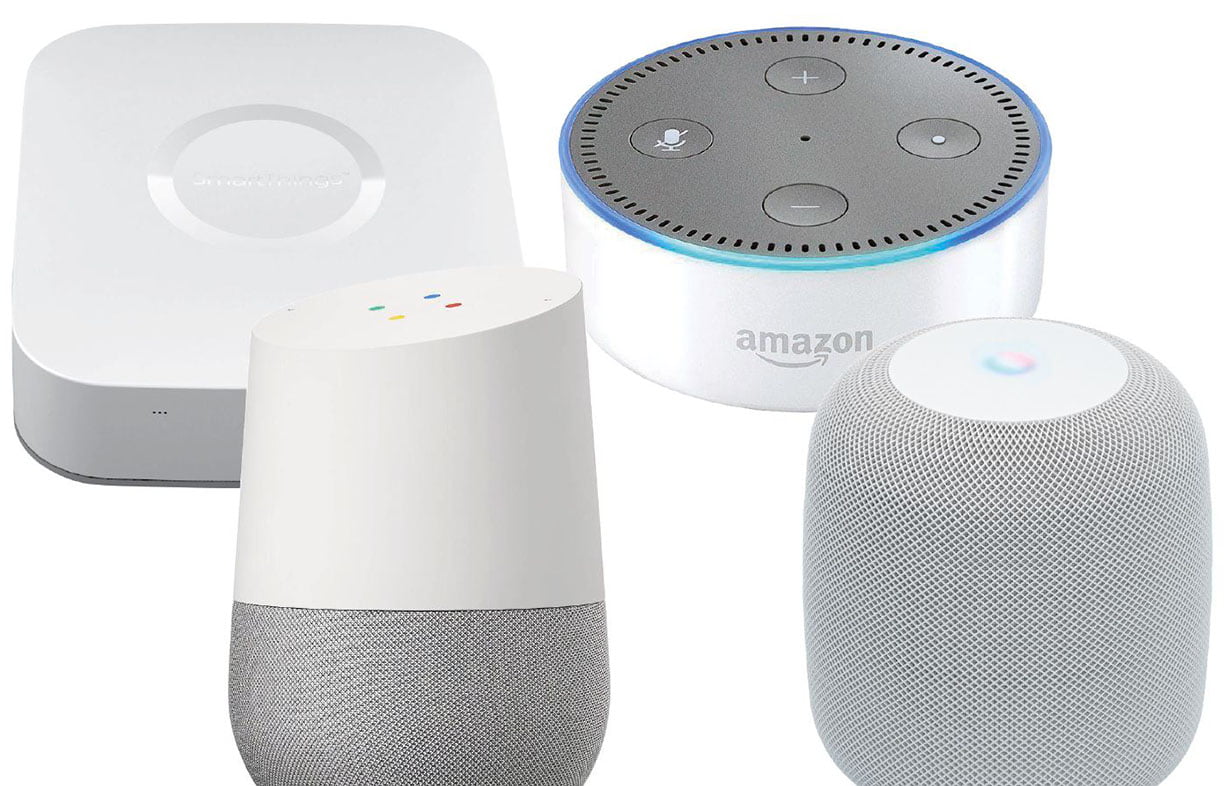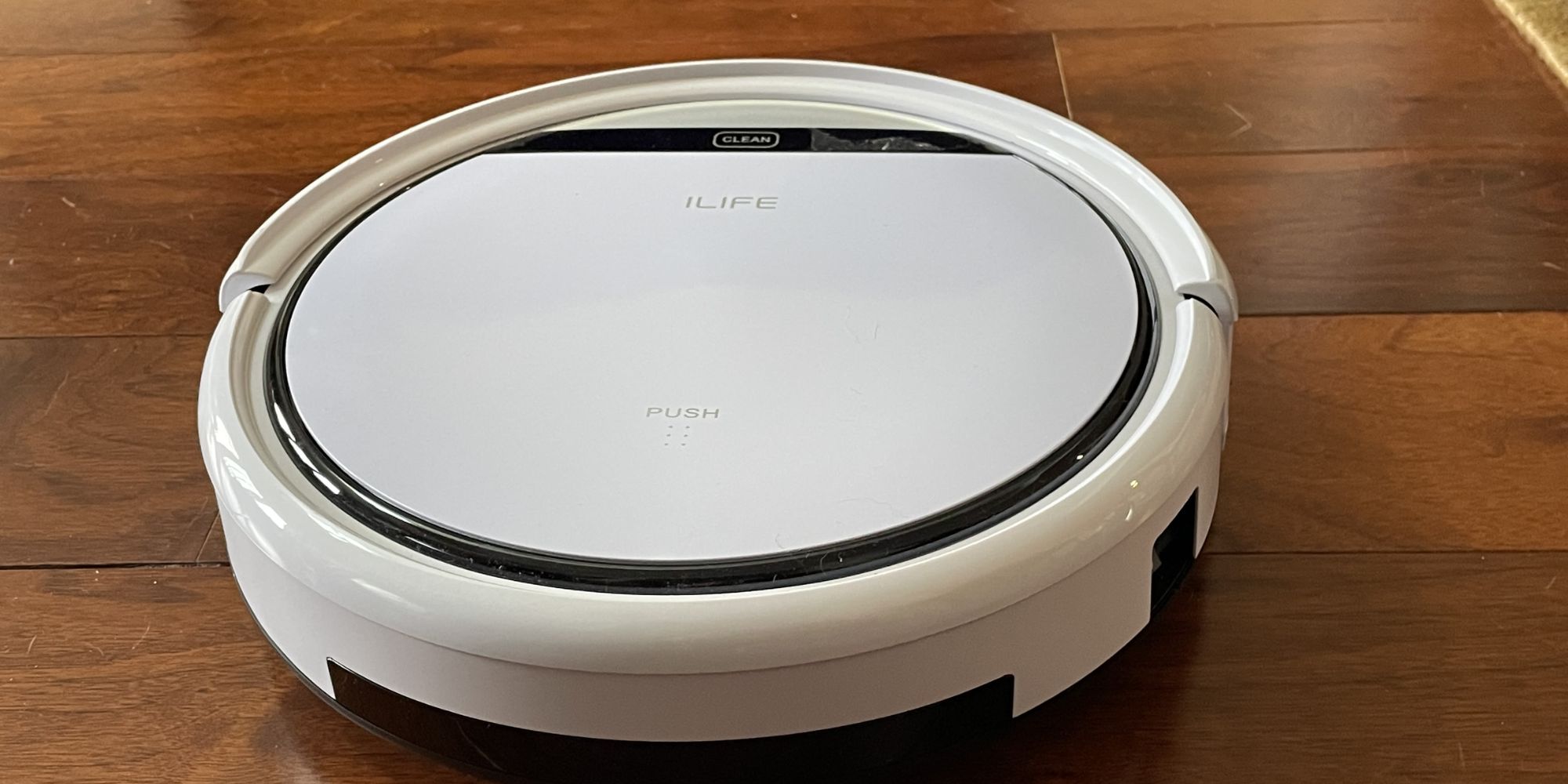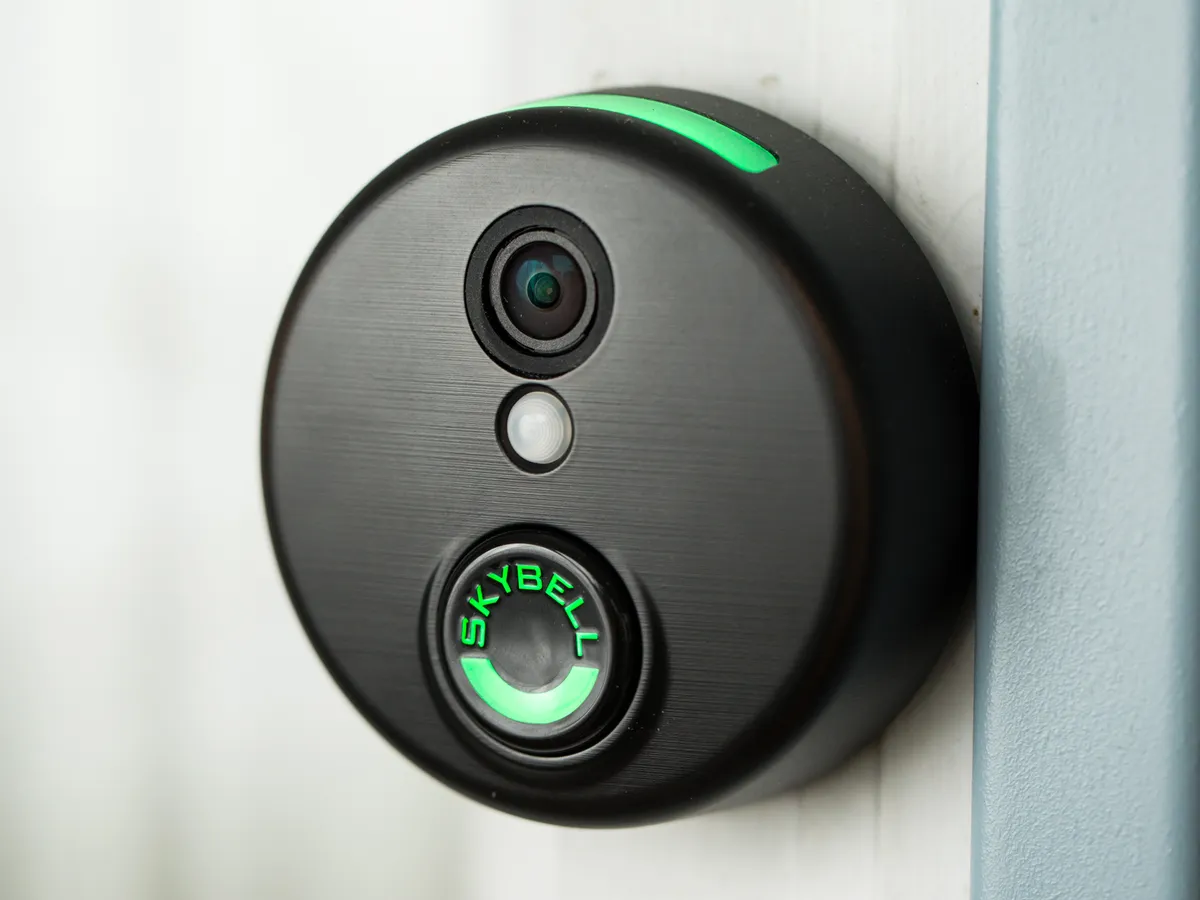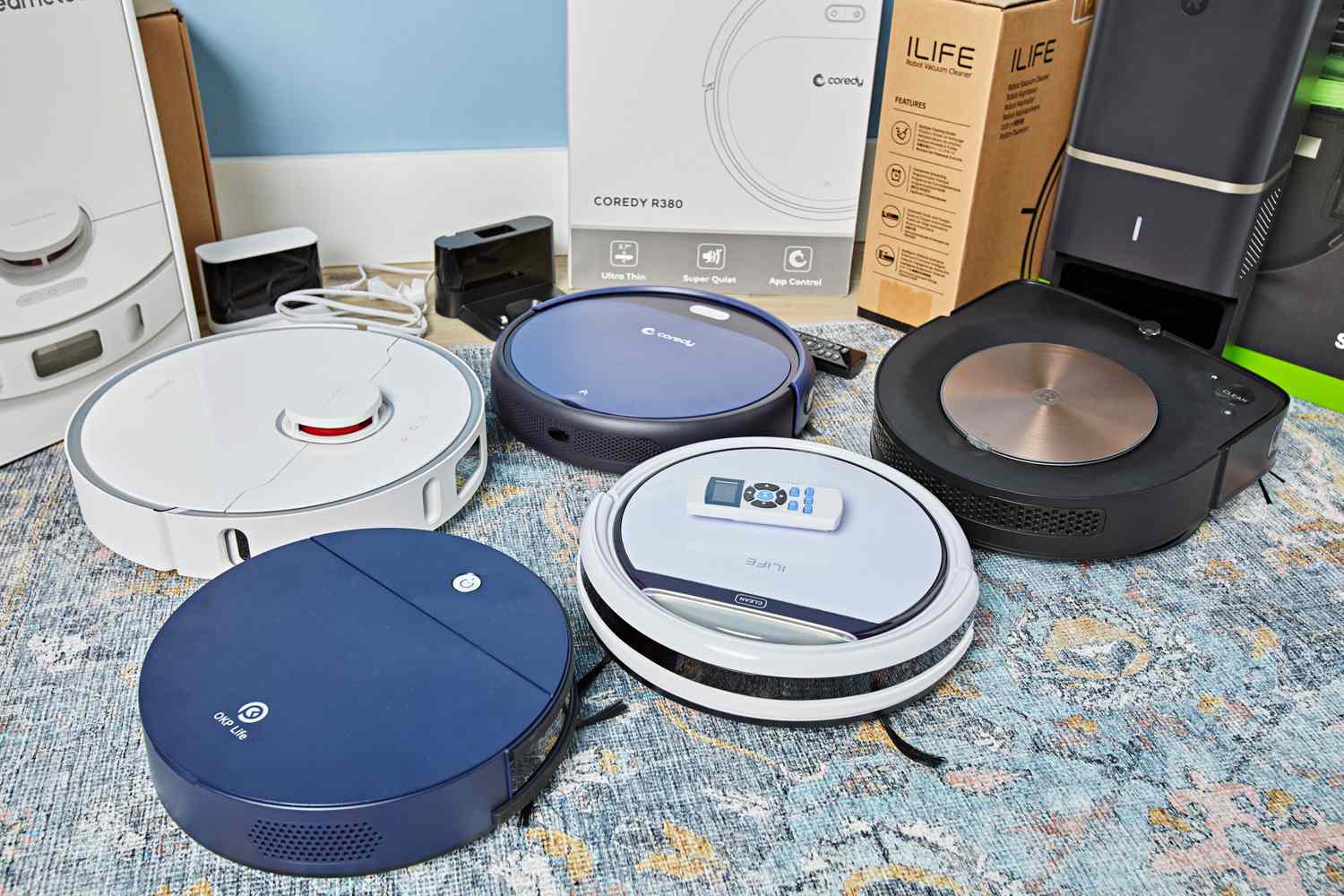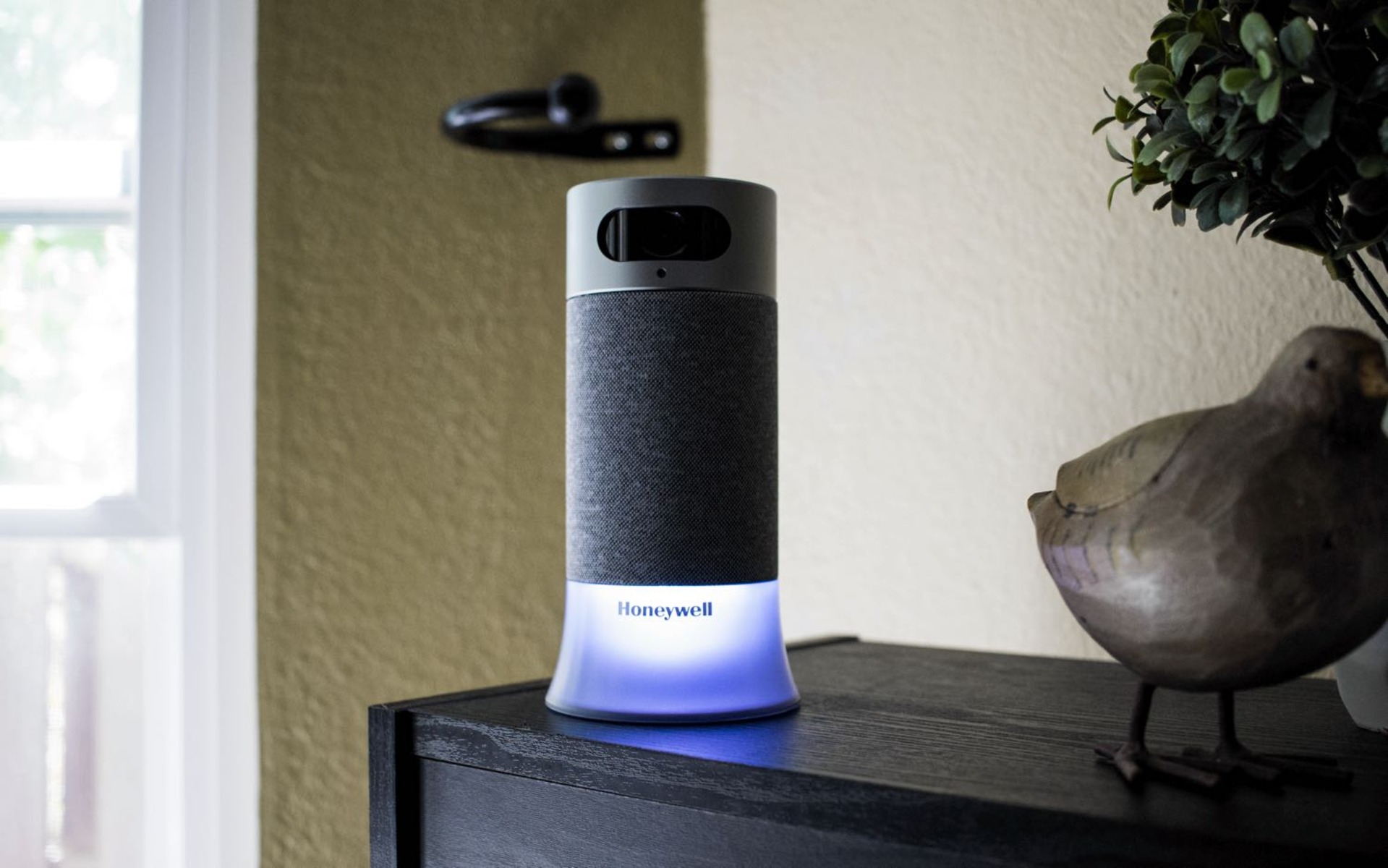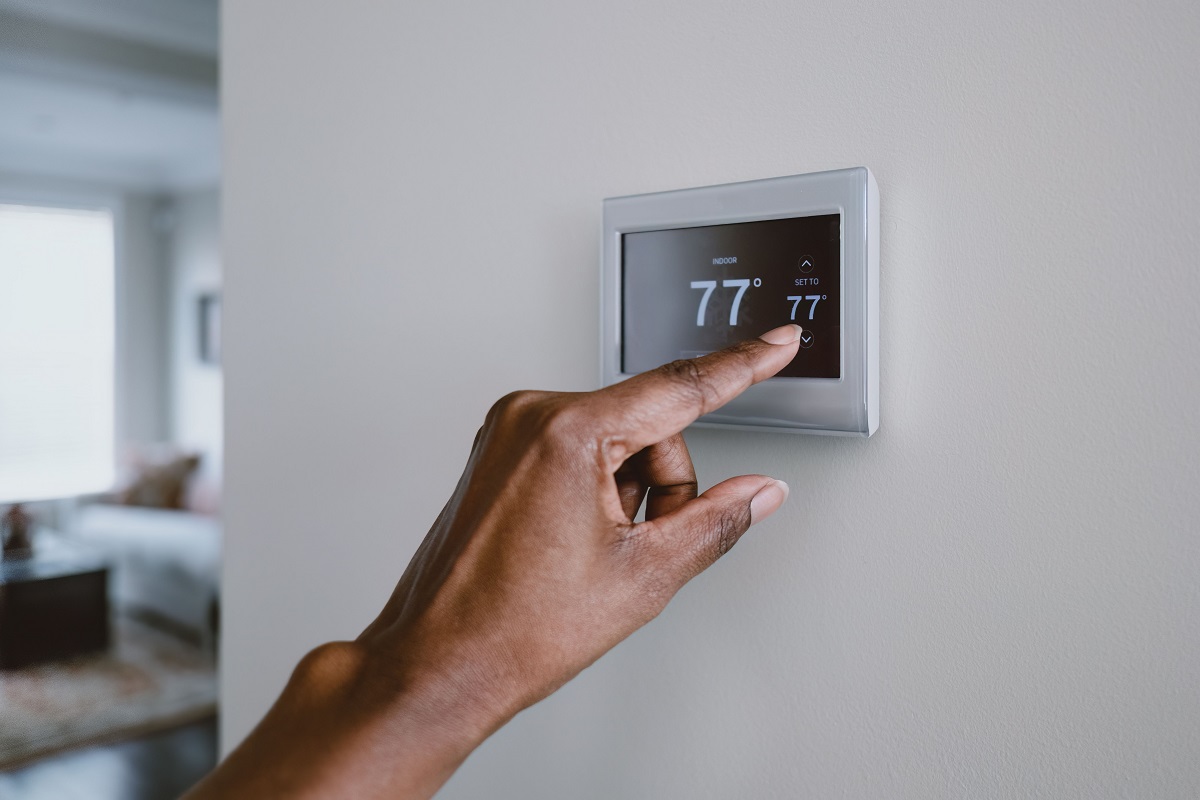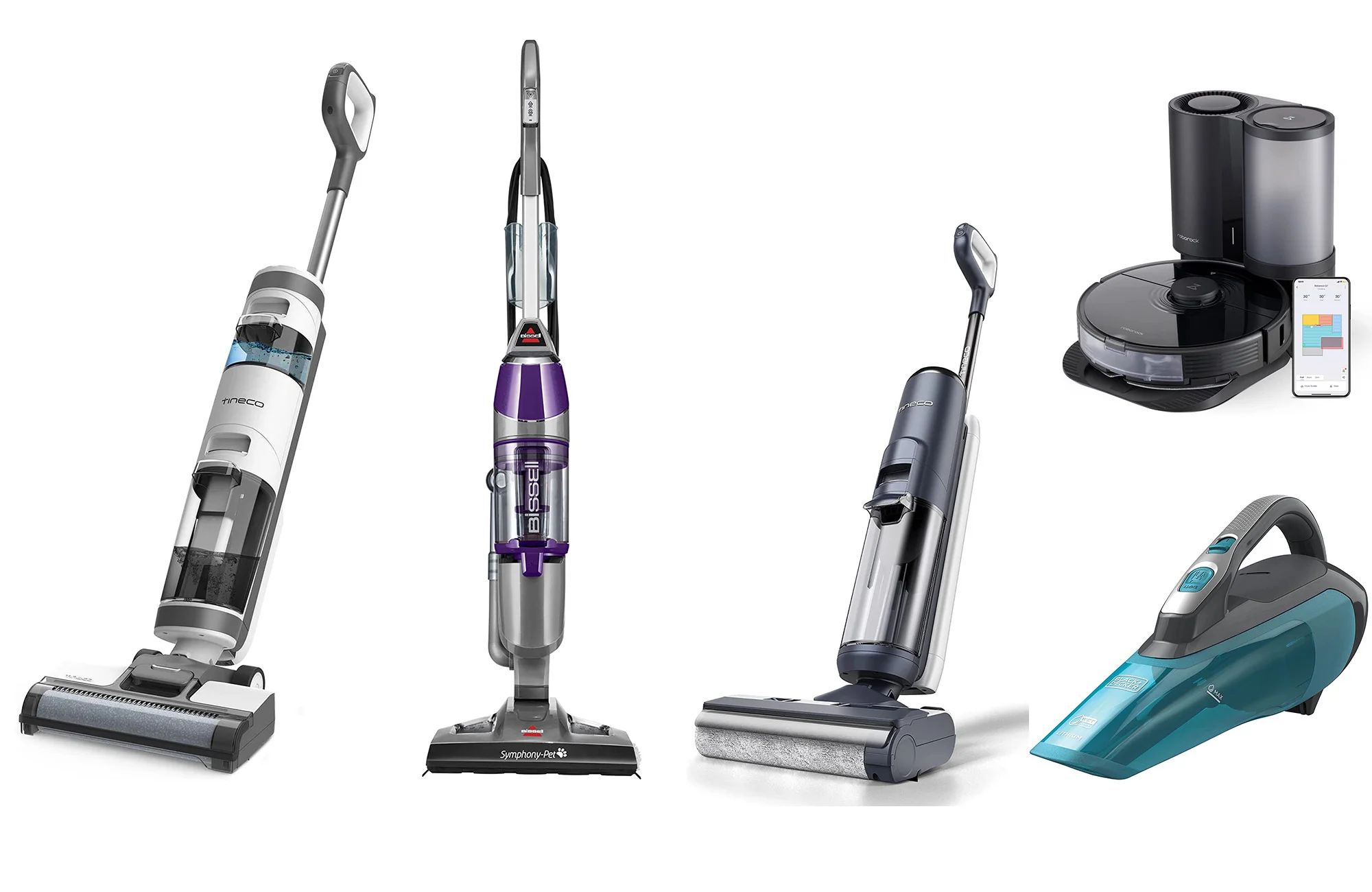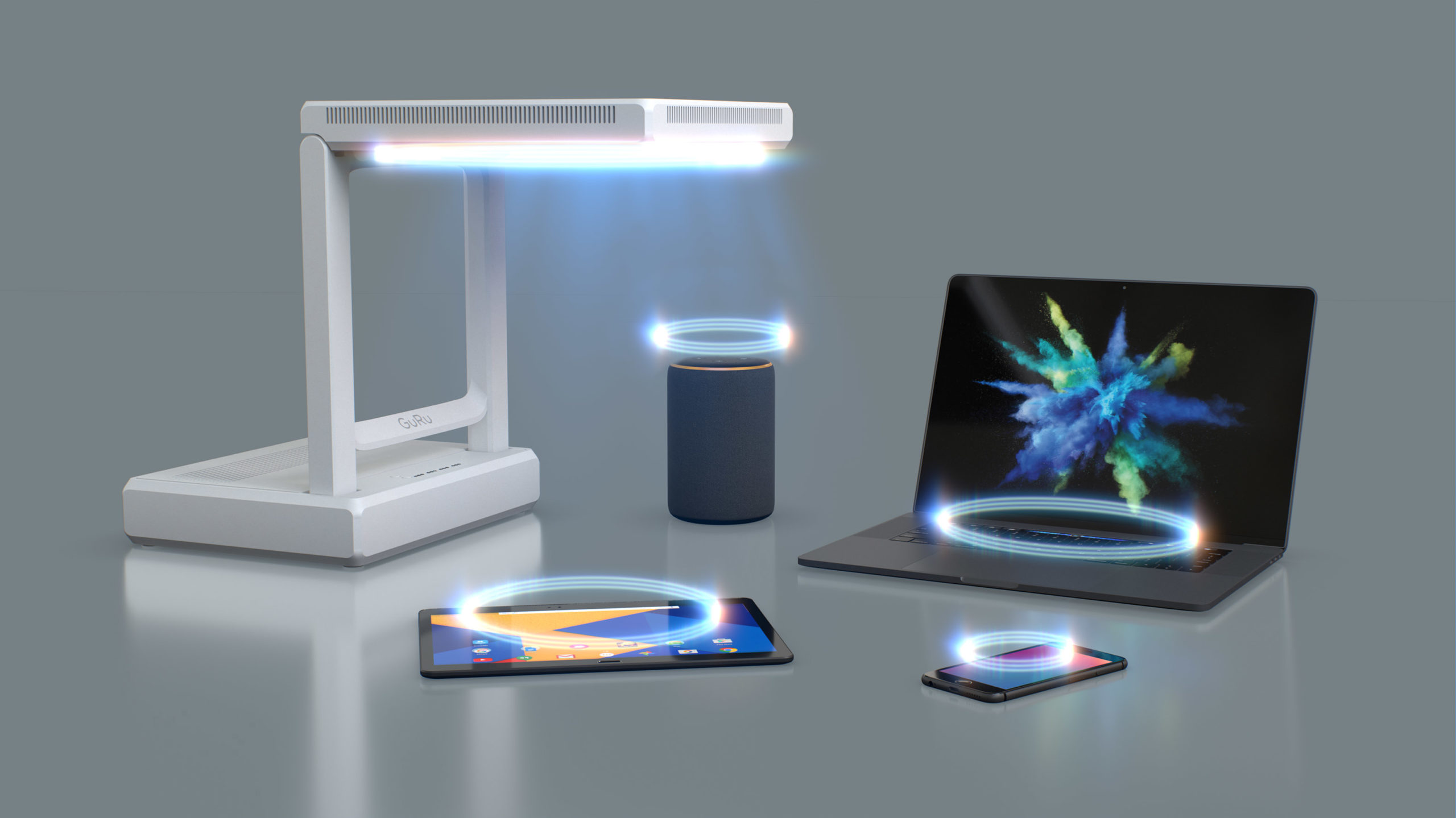What is a Smart Home?
A smart home is a living space equipped with various connected devices and technologies that can automate and enhance various aspects of daily life. These devices, often controlled through a central hub or smartphone app, allow homeowners to remotely manage and monitor their home’s functions and systems. From controlling lights and temperature to managing security and appliances, a smart home offers convenience, comfort, and increased efficiency.
Smart homes are built on the concept of the Internet of Things (IoT), where everyday objects are connected to the internet and can communicate with each other. This interconnection enables devices to collect and share data, making it easier to automate and control multiple functions within the home.
With a smart home, homeowners can remotely regulate heating and cooling systems, adjust lighting and shades, monitor security cameras, lock and unlock doors, and even control home entertainment systems. These devices can also be programmed to perform certain actions based on specific triggers or schedules, allowing for personalized and efficient home automation.
One of the key aspects of a smart home is its ability to provide real-time information and notifications. For example, smart thermostats can offer energy usage insights, helping homeowners optimize their energy consumption. Security systems can send alerts to smartphones in case of suspicious activities or unauthorized access. It is this data-driven and interconnected nature that sets smart homes apart from traditional homes.
Smart home technology continues to evolve and expand. Innovations in artificial intelligence (AI) have made it possible for devices to learn and adapt to users’ behaviors and preferences. For instance, a smart home system may automatically adjust lighting and temperature based on the time of day, or it may learn users’ routines and optimize energy usage accordingly.
Overall, a smart home offers convenience, control, and efficiency. It transforms a traditional living space into an interconnected hub where homeowners can manage and monitor their home remotely, creating a more comfortable and personalized living experience.
How Does a Smart Home Work?
At the core of a smart home is the network of interconnected devices and technologies that communicate with each other. The process of how a smart home works can be broken down into several steps.
Firstly, a smart home relies on a robust internet connection. The devices within the home, such as smart thermostats, cameras, and appliances, connect to the home’s Wi-Fi network, allowing them to communicate with each other and the homeowner.
Secondly, a central hub or smart home controller acts as the brain of the smart home system. It serves as a central point of control and coordination for all the connected devices. The hub may be a dedicated device or an app on the homeowner’s smartphone or tablet, providing an interface to manage and monitor the devices in the home.
Once the devices are connected and the hub is set up, homeowners can start customizing their smart home experience. This customization involves setting up automation features, which allow devices to perform actions based on specific triggers or schedules.
For example, a homeowner may set up a schedule to automatically turn on the lights and adjust the thermostat when they arrive home from work. Or, they may create a trigger that turns on the security cameras and sends an alert to their phone if motion is detected while they’re away.
Smart home devices communicate with each other through protocols such as Wi-Fi, Bluetooth, Zigbee, or Z-Wave. These protocols enable interoperability, allowing devices from different manufacturers to work together seamlessly.
Furthermore, advancements in voice recognition technology have made it possible to control smart home devices using voice commands. Virtual assistants like Amazon’s Alexa or Google Assistant can be integrated into the smart home system, allowing homeowners to control their devices simply by speaking.
Overall, a smart home works by connecting devices to a central hub or controller, allowing homeowners to remotely manage and automate various functions. This connectivity, along with the customization and automation capabilities, contributes to the convenience, comfort, and efficiency of a smart home.
Smart Home Devices and Technologies
A smart home is equipped with a wide range of devices and technologies that work together to create an interconnected and automated living space. These devices encompass various aspects of home management, including security, entertainment, energy efficiency, and convenience.
One of the essential components of a smart home is smart lighting. Smart bulbs and lighting systems allow homeowners to control and automate their lighting, adjusting brightness, color, and scheduling through a smartphone app or voice commands. This not only enhances convenience but also contributes to energy savings by enabling efficient control over lighting usage.
Smart thermostats are another prevalent device in smart homes. These devices can regulate the temperature of a home based on user preferences and occupancy patterns. By learning and adapting to homeowners’ behaviors, smart thermostats can optimize energy usage and improve comfort, helping to reduce energy waste and lower utility bills.
Security is another crucial aspect of a smart home. Smart security cameras provide homeowners with the ability to monitor their property remotely. These cameras can send real-time video feeds to a smartphone or computer, allowing homeowners to keep an eye on their home even when they’re away. Additionally, smart door locks enable users to lock and unlock doors remotely, providing convenience and enhancing security.
Entertainment systems can also be part of a smart home setup. Smart TVs, speakers, and streaming devices can be connected to a central hub, enabling homeowners to control their entertainment systems using voice commands or a smartphone app. Integration with virtual assistants allows for hands-free control and seamless streaming of media.
Home automation is a key feature of smart homes, and it can be achieved through various technologies. Zigbee and Z-Wave are wireless communication protocols that enable devices from different manufacturers to work together. With these technologies, homeowners can create complex automation routines where different devices interact with each other based on triggers or specific conditions.
Artificial intelligence (AI) plays an increasingly prominent role in smart home technologies. AI-powered devices can learn from user behaviors and adapt to their preferences. For instance, smart speakers with virtual assistants can understand and respond to voice commands, while AI-powered cameras can differentiate between regular and suspicious activities, reducing the occurrence of false alerts.
Overall, smart home devices and technologies encompass a wide range of functionalities, covering areas such as lighting, thermostats, security, entertainment, and automation. By integrating these devices into a cohesive system, homeowners can enjoy enhanced control, convenience, and efficiency in managing their homes.
Features of a Smart Home
Smart homes offer a multitude of features and advantages that enhance the overall living experience for homeowners. These features can be categorized into convenience, energy efficiency, security, and customization.
Convenience is a hallmark of smart homes. The ability to control various aspects of the home remotely through a smartphone app or voice commands simplifies daily tasks. Lighting, temperature, and even appliances can be adjusted with ease, providing a seamless and effortless experience for homeowners.
Energy efficiency is a key benefit of smart homes. Smart thermostats allow for precise control over heating and cooling, optimizing energy consumption. Lights and other electrical devices can be programmed to turn off when not in use, preventing wasted energy. Real-time energy usage data provided by smart home devices can also help homeowners identify areas for improvement and make informed decisions to reduce their carbon footprint.
Security is a top priority for homeowners, and smart homes offer advanced security features. Smart door locks, coded entry systems, and security cameras provide an extra layer of protection. Homeowners can have peace of mind by remotely monitoring their property and receiving real-time alerts in the case of any suspicious activities. Additionally, integration with smart home automation allows for the simulation of occupancy, giving the appearance that someone is home, even when the property is vacant.
Customization is a significant advantage of smart homes. Homeowners have the flexibility to customize their smart home experience to suit their preferences. From choosing the color and brightness of lighting to setting automation schedules based on daily routines, smart homes offer a tailored living environment. Integration with virtual assistants and voice recognition technology allows for intuitive and personalized control of smart home devices.
Accessibility is also a notable feature of smart homes. Individuals with mobility challenges or disabilities can benefit greatly from the automation and remote control capabilities of smart home devices. With features like voice control and smartphone apps, tasks that may be difficult or impossible can be accomplished with ease, providing greater independence and inclusivity.
Integration and compatibility are crucial features of smart homes. With a wide range of smart devices and technologies, homeowners can easily integrate and control multiple devices using a centralized hub or app. This interoperability ensures that different brands and models of devices can work together seamlessly, creating a cohesive smart home ecosystem.
In summary, smart homes offer a range of features that enhance convenience, energy efficiency, security, customization, accessibility, and integration. These features collectively create a modern and efficient living environment, revolutionizing the way homeowners interact with and manage their homes.
Popular Smart Home Devices
The market for smart home devices has expanded rapidly in recent years, offering homeowners a wide array of options to enhance their living spaces. Here are some popular smart home devices that have gained significant popularity:
1. Smart Speakers: Smart speakers, such as Amazon Echo or Google Home, have become increasingly popular. Equipped with virtual assistants like Alexa or Google Assistant, these speakers can play music, provide real-time information, control other smart home devices, and even act as a hub for voice control within the home.
2. Smart Thermostats: Smart thermostats, like the Nest Learning Thermostat, allow homeowners to remotely control and program their heating and cooling systems. These devices learn the homeowners’ preferences and adjust the temperature accordingly, optimizing energy usage and increasing comfort.
3. Smart Lighting: Smart light bulbs and lighting systems, such as Philips Hue or LIFX, offer homeowners the ability to control and customize their lighting remotely. They can adjust the brightness, color, and even create schedules or automation routines to match their preferences and needs.
4. Smart Security Cameras: Smart security cameras, like Ring or Arlo, provide homeowners with peace of mind by allowing them to monitor their property remotely. These cameras offer features such as motion detection, night vision, and two-way communication, enabling homeowners to keep an eye on their home at all times.
5. Smart Door Locks: Smart locks, such as August or Yale, offer convenience and security by allowing homeowners to lock and unlock their doors remotely. They can also provide temporary access codes for guests or service providers, eliminating the need for physical keys.
6. Smart Plugs: Smart plugs, like TP-Link or Wemo, can turn any regular appliance or device into a smart device. These plugs can be controlled remotely, allowing homeowners to turn them on or off, schedule usage, or monitor energy consumption.
7. Smart Monitoring Systems: Smart monitoring systems, such as the Ring Alarm or SimpliSafe, provide comprehensive security features for the entire home. These systems include motion sensors, door and window sensors, and professional monitoring services, offering complete protection against intruders.
8. Smart Entertainment Systems: Smart entertainment devices, such as smart TVs or streaming devices like Roku or Chromecast, offer homeowners a seamless and connected entertainment experience. They can be controlled through voice commands or smartphone apps, providing easy access to a wide range of streaming services and media.
9. Smart Appliances: Smart appliances, like smart refrigerators or washing machines, offer advanced features and connectivity. They can provide real-time notifications, optimize energy usage, and even reorder supplies when needed.
10. Smart Blinds and Shades: Smart blinds and shades, such as those from Lutron or Somfy, allow homeowners to control the amount of natural light and privacy in their homes remotely. They can be programmed to open and close based on specific schedules or triggered by other smart devices.
These are just a few examples of the wide range of smart home devices available on the market. As technology continues to advance, new and innovative smart home devices are constantly being introduced, giving homeowners more options to create a connected and efficient living environment.
Benefits of Having a Smart Home
Having a smart home offers numerous benefits that improve the overall quality of life for homeowners. Here are some key advantages of implementing a smart home system:
1. Convenience: Smart homes provide unparalleled convenience. With remote access and control through smartphone apps or voice commands, homeowners can easily manage and automate various aspects of their home. Whether it’s adjusting lighting, controlling temperature, or remotely operating appliances, smart homes offer a seamless and effortless living experience.
2. Energy Efficiency: Smart homes are designed to optimize energy usage. Smart thermostats can learn the homeowners’ behaviors and adjust temperature settings accordingly, leading to energy savings. Smart lighting systems can be programmed to turn off when not in use, reducing unnecessary energy consumption. These eco-friendly features not only save money on utility bills but also contribute to a more sustainable and environmentally conscious lifestyle.
3. Enhanced Security: Smart homes provide an added layer of security. With smart security cameras, homeowners can monitor their property remotely and receive real-time alerts in case of any suspicious activities. Smart door locks offer convenience and peace of mind by allowing homeowners to remotely control and monitor access to their home. Integrating these security features into a smart home system ensures that homeowners can protect their property and loved ones effectively.
4. Customization: Smart homes offer a high level of customization. Homeowners can tailor their home automation to match their preferences and routines. From setting up specific schedules for lighting and temperature to creating automation scenarios based on individual needs, smart homes allow for personalized experiences. Integration with virtual assistants and voice recognition technology enables intuitive and seamless control of smart home devices.
5. Improved Safety: Smart homes can enhance safety within the living environment. Smoke and carbon monoxide detectors can be connected to a smart home system, alerting homeowners to potential dangers and triggering automated responses like turning on lights or unlocking doors to facilitate evacuation. Monitoring the home remotely contributes to peace of mind, especially for frequent travelers or individuals with mobility challenges.
6. Accessibility: Smart home technology ensures accessibility for individuals with disabilities or mobility limitations. Voice control features and smartphone apps provide an inclusive living experience, allowing hands-free operation of devices and appliances. Smart home systems can be customized to accommodate specific needs, making day-to-day activities more manageable and enjoyable for all occupants.
7. Integration and Interoperability: Smart homes offer the benefit of integrating various devices and technologies into a unified system. Different brands and models of devices can work together seamlessly through wireless communication protocols such as Zigbee or Z-Wave. This interoperability ensures that homeowners can choose the best devices for their specific needs and preferences without worrying about compatibility issues.
These benefits collectively contribute to a more comfortable, efficient, and enjoyable living experience. As smart home technology continues to advance, homeowners can expect even more advantages and opportunities to improve their lifestyles through automation and connectivity.
Common Misconceptions about Smart Homes
Smart homes have become increasingly popular, but there are still some misconceptions surrounding this innovative technology. Let’s address and dispel some of the most common misconceptions about smart homes:
1. Smart homes are too expensive: One of the major misconceptions is that smart homes are only for the wealthy. While some high-end smart home devices can be pricey, there are plenty of affordable options available on the market. Additionally, homeowners can start small by adding a few smart devices and gradually expand their smart home system over time, making it more accessible and budget-friendly.
2. Smart homes are complicated to set up: It’s commonly believed that setting up a smart home requires extensive technical knowledge. However, many smart home devices are designed to be user-friendly and easy to install. Most devices come with step-by-step instructions, and many can be set up and connected within minutes. Furthermore, smart home systems can be customized to fit a homeowner’s preferences and needs, allowing for a personalized and straightforward setup.
3. Smart homes are vulnerable to hacking: Security is a concern for any technology-related device, including smart homes. However, with proper security measures in place, smart homes can be just as secure as traditional homes. Manufacturers are continuously improving security protocols, and homeowners can take precautions such as securing their Wi-Fi network and regularly updating device firmware. By following best practices, the risk of hacking can be minimized.
4. Smart homes are only for tech-savvy individuals: Another misconception is that smart homes are only suitable for those who are tech-savvy. In reality, smart home devices are designed to be user-friendly and accessible to anyone. Smart home systems often come with intuitive interfaces and smartphone apps, allowing homeowners to control their devices with ease, even without extensive technical knowledge. Virtual assistants further simplify the smart home experience by providing voice control capabilities.
5. Smart homes consume too much energy: Some believe that implementing smart home technology can increase energy consumption. However, the opposite is true. Smart devices, such as thermostats and lighting systems, are designed to optimize energy usage. They can automatically adjust settings based on occupancy or user preferences, leading to energy savings. By tracking energy usage and providing real-time insights, smart homes actually promote energy efficiency and help homeowners make more conscious decisions to reduce their environmental footprint.
6. Smart homes invade privacy: Privacy concerns often arise with the proliferation of smart home devices. However, when proper security measures are in place, such as strong passwords and regularly updated firmware, smart homes are no more invasive than other connected devices. Additionally, setting up individual privacy preferences and being mindful of the data collected by smart home devices can provide homeowners with peace of mind.
7. Smart homes are purely for entertainment purposes: While entertainment devices, such as smart speakers and TVs, are popular components of smart homes, they are just one aspect of the overall smart home experience. Smart home technology extends far beyond entertainment, offering benefits such as enhanced security, energy efficiency, convenience, and customization. The true value of a smart home lies in its ability to integrate and automate various aspects of daily life.
By understanding and debunking these misconceptions, homeowners can better appreciate the practicality and advantages that smart homes bring. With proper research and guidance, individuals can confidently embrace this technology and reap the benefits it offers.
Considerations before Setting up a Smart Home
Before diving into setting up a smart home, there are several important considerations to keep in mind. Understanding these factors will help homeowners make informed decisions and ensure a successful implementation of their smart home system:
1. Compatibility: It is crucial to ensure compatibility between different smart home devices and technologies. Before purchasing any devices, homeowners should research and confirm compatibility with their existing devices or the central smart home hub they plan to use. This will ensure that all devices work together seamlessly and avoid any potential issues with integration.
2. Budget: Setting up a smart home can be done at various price points. It’s important to establish a budget and prioritize which devices are most important to you. Starting with a few essential devices and expanding gradually over time is a cost-effective approach that allows homeowners to tailor their smart home system to their needs and budget.
3. Connectivity: A reliable and stable internet connection is essential for a smart home system to function properly. Before setting up a smart home, homeowners should evaluate their internet service provider and ensure their network can handle the increased data traffic from the various connected devices.
4. Security: As with any connected technology, security should be a top priority. Homeowners should implement strong passwords, regularly update device firmware, and consider additional security measures like firewalls or network segmentation to protect their smart home system from potential cyber threats.
5. Privacy: Smart home devices collect data to provide personalized experiences, so homeowners must be mindful of their privacy. It’s essential to review the privacy policies of the smart home devices and manufacturers, understand what data is collected, and have control over how that data is used or shared.
6. Scalability: Consider the future expansion of the smart home system. Homeowners should think about how their needs and requirements may change over time and choose devices and technologies that are scalable and easily integrated with additional devices in the future.
7. User-Friendliness: Evaluate the user interface and ease of use of the smart home devices and control systems. Choose devices with intuitive interfaces and consider the level of technical knowledge required to set up and operate the devices. This will ensure that the smart home system is user-friendly for all household members.
8. Support and Integration: Research the customer support options and availability of software updates for the smart home devices being considered. Ensure that the devices have a good track record of ongoing support and compatibility with future technologies.
9. Lifestyle and Compatibility: Consider how a smart home system aligns with your lifestyle and daily routines. Identify which aspects of your home would benefit most from automation and determine how compatible the devices are with your preferred control methods, whether it’s through smartphone apps, voice control, or manual control.
10. Return Policy and Warranty: Check the return policies and warranty information for the smart home devices being purchased. This will provide peace of mind in case any issues arise with the devices or if they are not suitable for the specific needs of the home.
By considering these factors, homeowners can plan and set up a smart home system that meets their specific requirements and ensures a smooth integration of devices and technologies.
Conclusion
Smart homes have revolutionized the way we interact with and manage our living spaces. With the integration of smart devices and technologies, homeowners can enjoy enhanced convenience, efficiency, security, and customization in their homes. Through remote control, automation, and interconnectedness, smart homes offer a seamless and interconnected living experience.
Despite some common misconceptions, smart homes are not only for the wealthy or tech-savvy; they are becoming increasingly accessible and affordable. With a wide range of smart home devices and technologies available, homeowners can start small and gradually expand their smart home system over time.
Before setting up a smart home, it is crucial to consider factors such as compatibility, budget, connectivity, security, privacy, scalability, user-friendliness, support, lifestyle, and warranty. These considerations will help homeowners make informed decisions and ensure a successful implementation of their smart home system.
A smart home offers numerous benefits, including convenience, energy efficiency, enhanced security, customization, improved safety, accessibility, integration, and interoperability. From controlling lighting and temperature to managing security systems and home entertainment, smart home devices provide homeowners with increased control and efficiency in managing their homes.
As technology continues to advance, smart homes will continue to evolve and offer even more innovative solutions for everyday living. By embracing smart home technology and implementing it thoughtfully, homeowners can transform their living spaces into efficient, comfortable, and connected environments.
So, whether you’re looking to upgrade your home with a few smart devices or embark on a comprehensive smart home transformation, the possibilities and benefits are endless. Embrace the future of home automation and create a smart home that suits your needs, preferences, and lifestyle.







